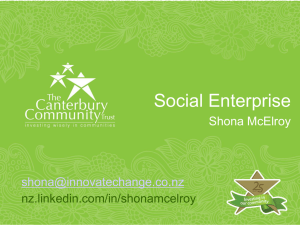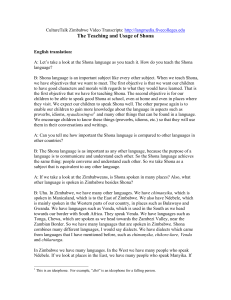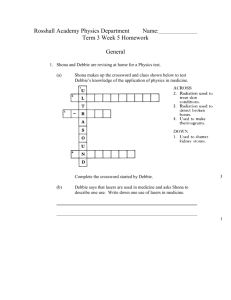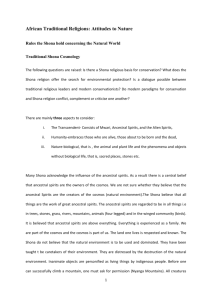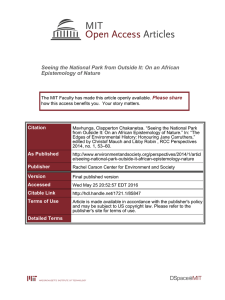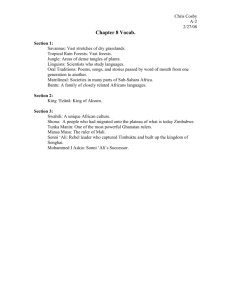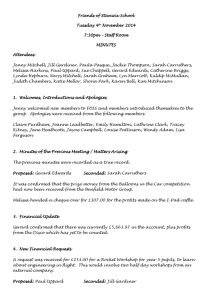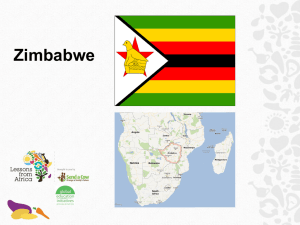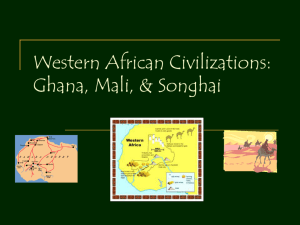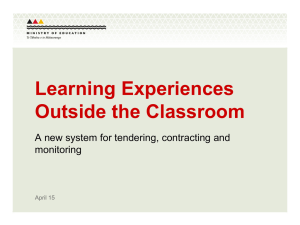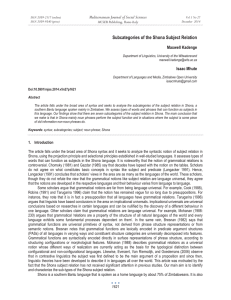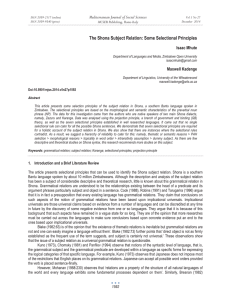Engaging your child through stories - Transcript
advertisement
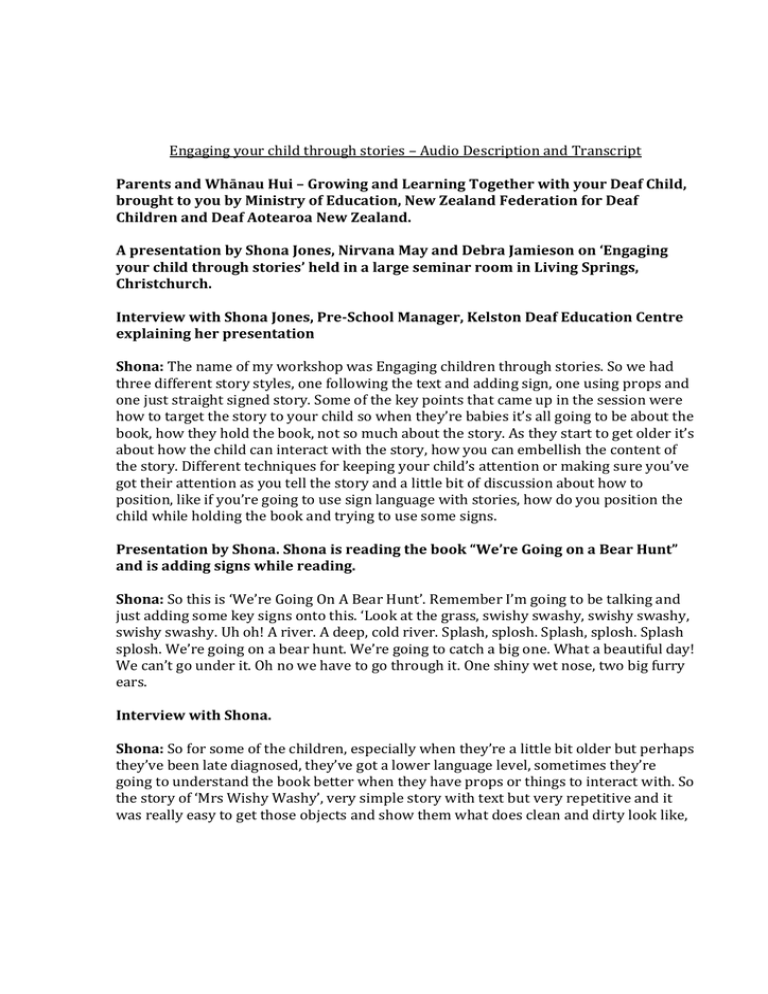
Engaging your child through stories – Audio Description and Transcript Parents and Whānau Hui – Growing and Learning Together with your Deaf Child, brought to you by Ministry of Education, New Zealand Federation for Deaf Children and Deaf Aotearoa New Zealand. A presentation by Shona Jones, Nirvana May and Debra Jamieson on ‘Engaging your child through stories’ held in a large seminar room in Living Springs, Christchurch. Interview with Shona Jones, Pre-School Manager, Kelston Deaf Education Centre explaining her presentation Shona: The name of my workshop was Engaging children through stories. So we had three different story styles, one following the text and adding sign, one using props and one just straight signed story. Some of the key points that came up in the session were how to target the story to your child so when they’re babies it’s all going to be about the book, how they hold the book, not so much about the story. As they start to get older it’s about how the child can interact with the story, how you can embellish the content of the story. Different techniques for keeping your child’s attention or making sure you’ve got their attention as you tell the story and a little bit of discussion about how to position, like if you’re going to use sign language with stories, how do you position the child while holding the book and trying to use some signs. Presentation by Shona. Shona is reading the book “We’re Going on a Bear Hunt” and is adding signs while reading. Shona: So this is ‘We’re Going On A Bear Hunt’. Remember I’m going to be talking and just adding some key signs onto this. ‘Look at the grass, swishy swashy, swishy swashy, swishy swashy. Uh oh! A river. A deep, cold river. Splash, splosh. Splash, splosh. Splash splosh. We’re going on a bear hunt. We’re going to catch a big one. What a beautiful day! We can’t go under it. Oh no we have to go through it. One shiny wet nose, two big furry ears. Interview with Shona. Shona: So for some of the children, especially when they’re a little bit older but perhaps they’ve been late diagnosed, they’ve got a lower language level, sometimes they’re going to understand the book better when they have props or things to interact with. So the story of ‘Mrs Wishy Washy’, very simple story with text but very repetitive and it was really easy to get those objects and show them what does clean and dirty look like, you know what were the characters doing in the story, they were jumping into the mud and then they were getting dirty and then they were getting clean. So that type of strategy’s really important. Presentation by Shona continued. Shona is holding up the book ‘Good Night Gorilla’. Shona: Another great thing when you’re telling stories with children is finding books that don’t have a lot of words. So I don’t know if any of you are familiar with ‘Good Night Gorilla’? So that’s about as much text is on each page but by having a book like this, (page shows a speech bubble with one line of text) as you tell the story you can talk about different aspects of it. You start to notice that they keys match the cage so you start to bring in colours. What key does he need to unlock the gate? There’s a balloon that floats higher and higher and higher up in the sky. So there’s so many different parts of this story that you can talk with your child about but you’re not locked into a text. So books without text are really, really good to use with children. Interview with Shona continued. Shona: I’d hope that what parents would take from the workshop was to be relaxed about reading books with their children, having fun with it, trying different ways, making sure that they’ve got their child’s attention and that the child wants to be there with them. Books in general just open up the world to children. It’s a really nice time that you can reinforce language with your child. And really, if you find a story that links to experiences that the child’s had, you’re just constantly building on their layers of language that the child’s developing. PowerPoint on Top Tips for ‘Engaging your child through stories’. Top Tips: Choose books that suit your child: - With babies it is mostly about the book and routines like turning the page. - With toddlers it is more about your interactions with the story. - Match your approach to their language level. Be relaxed, have fun with them and try a variety of approaches – ensure they want to be there and that you have their attention. Remember that telling stories doesn’t necessarily need to involve text or books or pictures – you can make your own stories based on what your child is doing or is interested in. Props can be fun and effective too. Ministry of Education logo, Deaf Aotearoa New Zealand logo, NZ Federation for Deaf Children logo.
